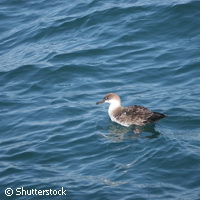EU-funded conservation halts decline of threatened Maltese Shearwaters
EU-funded conservation work has halted the decline of the Yelkouan Shearwaters, one of Europe's most threatened bird species on the Rdum tal-Madonna peninsula in Malta. EU support for the research came from the LIFE Nature Programme that provides funding for projects contributing to the EU Birds and Habitats Directives. The programme provided 50% of the research's funding to the tune of nearly EUR 500,000. The Yelkouan Shearwaters have been steadily declining in the Mediterranean for many years. In 2008, the species was upgraded to 'Near threatened' in the International Union for Conservation of Nature (IUCN) Red List and is listed under Annexe 1 of the EU Birds Directive, meaning they are subject to special conservation measures. The Maltese Islands are home to approximately 10% of the world's population of Yelkouan Shearwaters, but several colonies, including that at Rdum tal-Madonna, have decreased at an alarming rate in the last 25 years because suitable nesting sites have been disturbed or destroyed. Scientists claim that the four-year project, Malta's largest conservation initiative, has stopped the population decline and improved the population trend of the species by around 10%. The project focused on eliminating a number of threats for the Shearwaters, carrying out scientific research to discover more about the lifecycle of the species and increasing awareness about the birds through an information campaign. According to the team, led by the non-governmental organisation (NGO) BirdLife Malta, the major threats for the Shearwaters are loud noise and bright lights caused by shipping and boating activity and rat predation. Thanks to the project, Transport Malta, the island's maritime authority, has taken measures to prevent boats from carrying out such activities, while a professional rat eradication programme was started in 2006 to decrease the rat population sustained by litter left in the area. Other threats for the Shearwater colony include camping and other recreational activities, urban encroachment, by catch due to fishing, dumping, illegal hunting and ferreting used in rabbit hunting, said the project partners, adding that all these threats have been systematically reduced in the past four years. This has been achieved by working closely with local fishermen to find out how fishing might be affecting the birds and subsequently introducing measures to prevent birds from being accidentally caught. Likewise, the Armed Forces of Malta has patrolled the sea throughout the project to ensure that birds are not shot or otherwise affected by activities from boats, and camping, which generates noise, and that vegetation damage and rubbish has been phased out in key areas. The project has undoubtedly been a success and will be used to set standards for the management of similar sites around Malta. But this does not mean that the colony at Rdum tal-Madonna can now be left to fend for itself. EU Life Yelkouan Shearwater project manager Nicholas Barbara insisted that the continuation of research and conservation actions are crucial to secure the site as a safe haven for Yelkouan Shearwaters. Because of the shearwaters Rdum tal-Madonna has been identified as a globally Important Bird Area (IBA) by Birdlife International and as an SPA (Special Protection Area) under the EU Birds Directive and an SAC (Special Area of Conservation) under the EU Habitats Directive, and is part of the Natura 2000 series of European Protected Sites. In addition to the shearwaters, the site is important for the Cory's Shearwater, the Blue Rock Thrush and the Spectacled Warbler. Short-toed Larks breed on the site and wintering birds include the Black Redstart. It is also home to various types of garrigue vegetation, including Wild Thyme, Mediterranean Heath and Maltese Spurge, and a number of orchid species. The Malta Environment and Planning Authority (MEPA) and the bank HSBC also supported the project with financial contributions.
Countries
Malta



